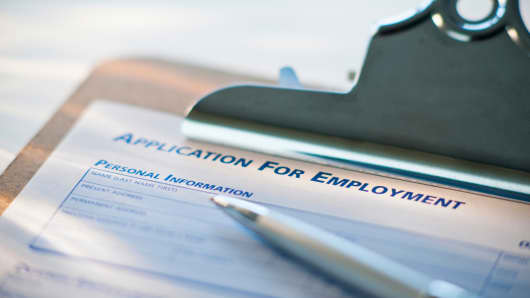Australian employment outstripped expectations for a second month in November and the jobless rate surprised everyone with a drop to 5.2 percent, an encouraging report that could lessen the urgency for more rate cuts.
The Australian dollar rose a third of a U.S. cent after the Australian Bureau of Statistics reported 13,900 net new jobs were created in November, beating forecasts of a flat outcome.
The drop in the jobless rate to a three-month low of 5.2 percent confounded expectations of a rise to 5.5 percent and could calm concerns that unemployment was bound to increase in coming months amid a slowing economy.
The market slightly lengthened the odds of further cuts in interest rates after the Reserve Bank of Australia (RBA) eased a quarter point this week, taking the cash rate back to the record lows of 3 percent touched during the global financial crisis.
"The headlines are much better than expected," said Matthew Johnson, an interest rate strategist at UBS. "This labor market report puts the higher unemployment rate a little further away."
"The details are probably not as big a change as headlines suggest, but it makes it more difficult to see the RBA moving rates in February. The RBA will need to see a higher unemployment rate and very low inflation to cut again in February."
(Read More: What Will the Aussie Central Bank Do Next?)
Interbank futures slipped to show a 42 percent chance of a move at the RBA's next policy meeting in February. Swap rates pared the probability to 52 percent, from 62 percent before the data.
The figures seemed to support RBA expectations that the unemployment rate would only rise "a little further" in coming months. Many analysts had seen a risk it could increase steadily toward 6 percent as a boom in mining investment begins to plateau next year.
Those worries had been stoked by Wednesday's data on gross domestic product (GDP), which showed the economy grew at the slowest pace in a year-and-a-half last quarter.
Crucially, sharply lower export earnings hit incomes across the economy, from profits to wages and tax receipts, and threaten to put upward pressure on unemployment.
"With mining investment slowing, the economy needs to generate more growth in other industries to avoid a faster-than -expected rise in unemployment," said UBS Scott Haslem, an economist at UBS.
(Read More: Australia Investment in New Mine Projects at Record High)
"Whether the RBA cuts over the past year are enough to help the economy rebalance is the big call for 2013. An elevated currency and restrictive fiscal policy is not helpful at this stage of the cycle."
Constructing Jobs
The pick-up in hiring in November lifted annual employment growth to 1.1 percent, from 0.9 percent in October, bringing it nearer the historical trend of around 1.5 percent.
Traditional big employers such as retail and construction have been shedding jobs, while manufacturing has suffered under a high currency and intense competition.
Construction and housing were particularly badly hit, and this is one area the RBA is keen to stimulate with lower rates.
However, the impact of its easing is being muted because the banks, pleading higher funding costs, are only passing on some of the cuts in their mortgage rates.
When the RBA took the cash rate to 3 percent during the global financial crisis, it dragged mortgage rates down to 5.75 percent, with great effect. This time, rates on home loans are only down around 6.45 percent even after this week's easing.
This was a point highlighted by RBA Deputy Governor Philip Lowe in a speech on Wednesday. "A 3 percent cash rate today is not the same as a 3 percent cash rate in the past," said Lowe, arguing that the "normal" level for both the cash rate and lending rates was lower than in the past couple of decades.
He also argued that lower rates were also needed to offset some of the effects of an "uncomfortably high" Australian dollar.
The currency actually rose to near $1.0500 this week even after the RBA cut rates to levels last seen in 2009, when the currency had been closer to 60 U.S. cents.


